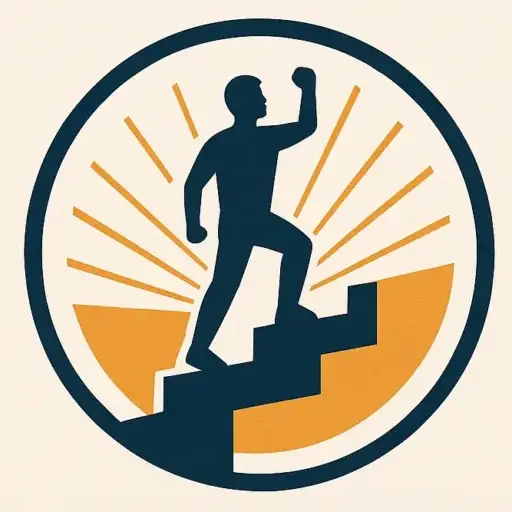“The Parable of the Pipeline” by Burke Hedges: Unlocking Financial Independence Through Passive Income
Introduction:
In the arena of private finance and wealth-constructing, there are limitless books, techniques, and philosophies. One ebook that sticks out for its specific method to presenting financial understanding is “The Parable of the Pipeline” , by Burke Hedges. This ebook ingeniously employs a fictional parable to deliver a powerful message about the significance of passive income and monetary education. In this complete article, we can delve into the important thing ideas and instructions provided within the ebook, imparting readers an intensive information of how to break out the rat race and gain economic independence.
Chapter 1: The Discovery of the Pipeline

“The Parable of the Pipeline” , kicks off with the advent of fundamental characters, Pablo and Bruno. These two buddies live in a dry village struggling to survive in the harsh situations as a result of a loss of water. Their lives exchange dramatically when they come upon an historic, dilapidated pipeline buried underground. This pipeline has the potential to bring an awful lot-wished water to their village, transforming their network’s fortunes.
This discovery sets the degree for the ebook’s vital topic, which revolves across the concept of creating passive income streams. Pablo and Bruno’s alternatives and movements throughout the story serve as metaphors for the monetary decisions we make in our very own lives.
Chapter 2: The Diverging Paths

As the tale unfolds, Pablo and Bruno face a vital decision. They can either pick out to repair and keep the pipeline or discover opportunity techniques of bringing water to their village. This desire is symbolic of the conventional approach to earning a residing thru difficult work versus the concept of making passive income.
Pablo opts to take the traditional direction, dedicating himself to the pipeline’s hard work-extensive upkeep. While he initially sees constant income from his efforts, he remains depending on the pipeline for his livelihood. His hard work generates earnings, but it comes on the value of his time and freedom.
On the alternative hand, Bruno takes a extraordinary direction. He acknowledges that by investing in education and sources, he can increase a device that generates passive earnings. Bruno is aware that this technique might take longer to bear fruit, however it gives the potential for economic freedom in the long run.
Chapter 3: The Power of Ownership Mentality

A key takeaway from the ebook is the importance of transferring from a “task mentality” , to an “ownership mentality” ; Pablo represents the process mentality, wherein people trade their effort and time for a paycheck. This mind-set regularly results in a cycle of working tirelessly without accomplishing genuine monetary freedom.
Bruno embodies the possession mentality, which emphasizes obtaining property and growing assets of passive profits. The ownership mentality is set building structures and investments that work for you, allowing you to enjoy the advantages of your efforts without being tied to a job.
The e book highlights that each strategies have their deserves, however the possession mentality in the long run offers a path to monetary independence and a extra gratifying existence.
Chapter 4: Investing in Yourself

Another crucial lesson from “The Parable of the Pipeline “, is the price of investing in oneself. Bruno’s choice to pursue training and gather the vital know-how and assets to create a passive income machine exemplifies this idea. He is familiar with that by way of growing his talents and know-how, he can construct something of lasting price.
Investing in oneself goes past formal schooling; it includes personal improvement, talent acquisition, and continuously searching for opportunities to develop. The e book encourages readers to take proactive steps to enhance themselves, as this is a crucial element in the journey in the direction of economic independence.
Chapter 5: The Importance of Delayed Gratification

In a world driven through instant gratification, “The Parable of the Pipeline “, underscores the significance of behind schedule gratification. Bruno’s preference to spend money on a passive income gadget calls for persistence and an extended-term attitude. He is aware of that the advantages of his efforts will now not materialize in a single day however believes in the electricity of compounding and perseverance.
This idea demanding situations the winning notion that fulfilment and wealth have to come fast and easily. Instead, the e book encourages readers to be willing to delay instantaneous rewards in trade for more huge lengthy-time period gains.
Chapter 6: The Snowball Effect of Passive Income

One of the most captivating components of the e-book is its portrayal of the snowball impact of passive earnings. As Bruno’s passive earnings device begins to generate revenue, he reinvests the profits to beautify and extend the system. Over time, this creates a compounding effect, where his profits grows exponentially without requiring additional hard work.
This concept is a principal pillar of wealth-building and financial freedom. "The Parable of the Pipeline" illustrates how passive earnings streams, once mounted, can develop and multiply, providing a stable and developing supply of wealth.
Chapter 7: Breaking Free from the Rat Race

The term “rat race” describes the cycle of running tirelessly to cover daily expenses without making meaningful progress closer to economic dreams. Pablo’s experience of operating without end to keep the pipeline without reaching proper freedom epitomizes this idea.
Bruno’s journey, but, represents breaking loose from the rat race. Through his determination to passive earnings and financial training, he step by step profits more manipulate over his time and monetary future. This subject resonates with many readers who aspire to escape the confines of a conventional nine-to-5 job and benefit economic independence.
Chapter 8: Sharing the Wealth

The very last chapter of the ebook emphasizes the importance of sharing one’s wealth and information. Bruno, after reaching financial fulfilment, returns to the village to help others. He maintenance the pipeline, ensuring a non-stop delivery of water to the community.
This act of giving back underscores the concept that wealth and fulfilment aren’t completely approximately private advantage but also about contributing to the well-being of others. The e-book encourages readers to do not forget how they can use their sources and expertise to make a wonderful impact on their groups and the arena.
Conclusion:
“The Parable of the Pipeline” by using Burke Hedges is a thought-frightening and impactful e book that makes use of a fictional parable to convey profound instructions about monetary independence, passive profits, and the strength of an ownership mentality. Through the characters of Pablo and Bruno, the book illustrates the picks we are facing in our very own monetary trips and encourages readers to rethink their approach to wealth-constructing.
Key takeaways from the e-book consist of the importance of investing in oneself, shifting from a job mentality to an ownership mentality embracing delayed gratification, and harnessing the snowball effect of passive income. Ultimately, the book inspires readers to break free from the rat race and consider how they can use their wealth and knowledge to benefit others.
“The Parable of the Pipeline” is a timeless guide that continues to inspire individuals seeking financial freedom and a more fulfilling life. It serves as a reminder that with the right mindset and strategies, anyone can build a pipeline to financial success.Unlocking
